08/26/2022 by Korey Beckett 0 Comments
Getting Your Home Ready for Fall & Winter
It seems to happen every single year. One minute you’re on a boat out on the lake thinking that summer’s never going to come to an end, then the next minute you’re preparing for fall and winter because there’s that one night where the air feels just a little brisker than it should. It’s just a rite of passage when you live in this part of the country as fall and winter can sneak up on you quickly. When those temperatures start to dip and the sun starts to set a little earlier, it means that it’s time to get your home ready for those harsh winter months.

There are some standard procedures that midwesterners do to get their home ready for fall and winter that you may be able to do from muscle memory at this point. There are some finer details that you shouldn’t forget about either, though. We’ve come up with a guideline that will help you remember everything that you need to get your home ready for fall and winter. Follow these steps and you’ll come out of the other side of winter being fully able to enjoy the springtime instead of repairing damages that were caused by the bitter temperatures, snow, and ice.
Heating and Cooling Check

Heating
First thing’s first when it comes to winterizing your house, and that’s making sure that you’ll be able to keep it warm. When it starts to get just a little bit cooler (and we’re talking when the temperature drops below 60 at night for the first time), check to see if your heating system is functioning properly by setting it to higher heat than you normally would. If you can tell that everything’s running properly, you might not have to do anything thankfully. If something doesn’t seem quite right, though, it’s time for action.
Because the heating system has been sitting unused for months, it could be a fuel supply issue, so make sure that there’s enough for the winter and run the system check again. If it’s working now, then it was an easy fix. Another easy fix is the air filter, which should be done each year anyway just to keep the air healthy and your home safe.
Then there are the more complicated fixes that include having your vents completely cleaned out. This is a little harder than just replacing an air filter, so make sure that you get a professional to check every year if you’re not too savvy on how the system should look. Lastly, test for carbon monoxide as it’s a silent killer that is responsible for 400-500 deaths per year, as well as around 50,000 hospitalizations. Never underestimate how important it is to have your heat working properly during winter.
As for the thermostat, it’s suggested that you set it to around 68 degrees while there are people in the home during winter, though you may want to go a bit higher or lower depending on the elements. When nobody’s home, try to set it a few degrees cooler. Thankfully there’s technology these days that allow us to set our homes’ temperatures with the use of a cell phone app. These apps will even let you see how much energy you’re using and the money that you’re saving through this method.
Cooling
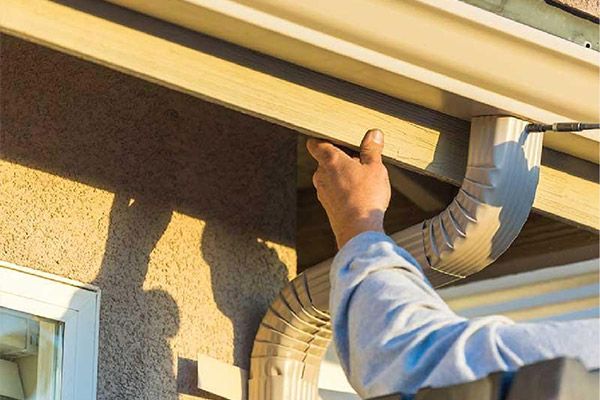
Unless there’s some sort of freak heat wave where it hits 90+ degrees (and we can’t rule that out in the Great Lakes area), you aren’t going to be using your air conditioner. That doesn’t mean that it should be completely ignored, though. After it has done its job for the summer, make sure that your air conditioner is well taken care of for the winter by being shut off and having all debris removed (and there’s probably going to be quite a bit of it). Next, take the time to wax the A/C unit and then cover it up with a sheet of plywood. Throughout the winter months, remove any snow or ice that finds its way to your A/C. If you add it to your shoveling duties during the winter, it makes for a happier and healthier air conditioner the following summer.
Preparing the Gutters
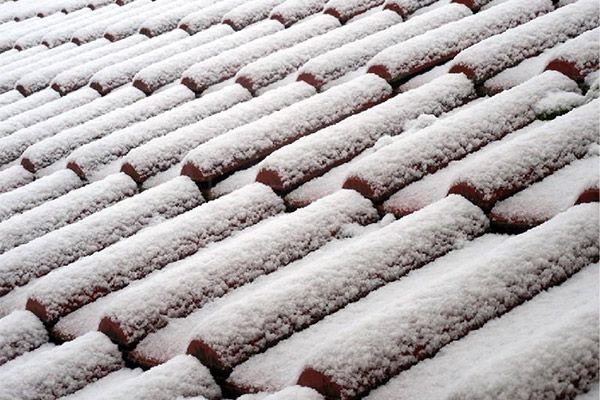
When you live where we do, you know that your home’s gutters are of the utmost importance because of how much they do for us year-round. In the spring and summer, the gutters are there to handle the heavy downpours that seem to either randomly come and go for a few minutes or linger for over a week. Then, in the fall, they get clogged up with a lot of leaves and other debris that falls from the trees. Finally, in winter, gutters take a huge brunt of the damage from the ice and heavy snow, so it’s important to make sure that they’re ready.
Winterizing your gutters is actually one of the final things on the checklist when getting your home ready. That’s because you’ll want to ensure that there’s not going to be another barrage of leaves that fill them up in the time between winterizing and an actual winter. With that in mind, the first step to winterizing your gutters is to make sure that all debris is completely gone. Yes, that means every single leaf.
A spatula is a good tool for making sure all that cold grime from autumn gets scraped out, and a plumber’s snake is essential for getting the downspouts free and clear. When the gutters are clear, you won’t get a buildup of ice that can make your gutters fall completely off the house. To get the most out of your gutters, make sure that your attic has proper insulation and ventilation as it will make their job easier. Lastly, you can even install a heat cable in your gutters if you really want to get fancy this winter.
Roof Repairs
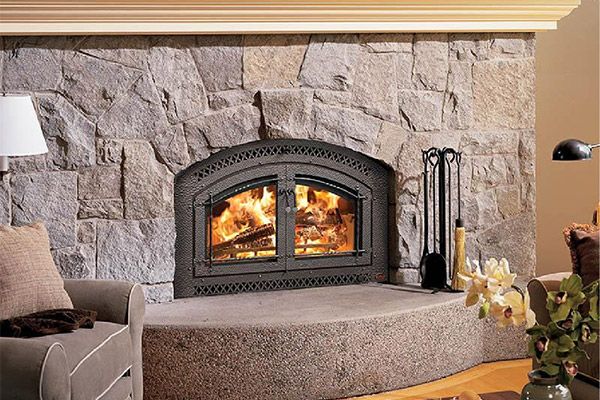
The gutters aren’t the only thing above your head that is going to be working hard during the winter. The roof of your home takes all of the same damage and is even more vital to your home’s safety. While it’s still warm enough, either you or a professional can check on the roof to make sure it’s ready for all of that ice and snow that’s (probably) going to be coming. Hopefully, if there is any damage from the storms of summer, it’s just a few shingles that need to be replaced. If that’s the case, it’s an easy fix. However, if there are major leaks on your roof that need to be addressed immediately, it’s better to get it out of the way now before it’s too late.
Readying the Fireplace

When we think of winter, the fireplace is one of those images that immediately pop into your head. You think of families sitting around it on Christmas morning, roasting chestnuts, Santa Claus, and all that fun holiday stuff. The fireplace can also be one of the more dangerous aspects of your home if you’re not careful. For that reason, you want to make sure it’s well prepared for winter.
Before you even start holiday shopping, have your chimney inspected by a professional to see if there’s a potential hazard. You may need to have it cleaned completely, and while it can be expensive, it can also save your life and make the winter months cozy and memorable. Make sure your flue is working properly and that you have a chimney cap to keep things operating, and get the proper firewood depending on the build for your chimney.
Irrigation and Pool Check
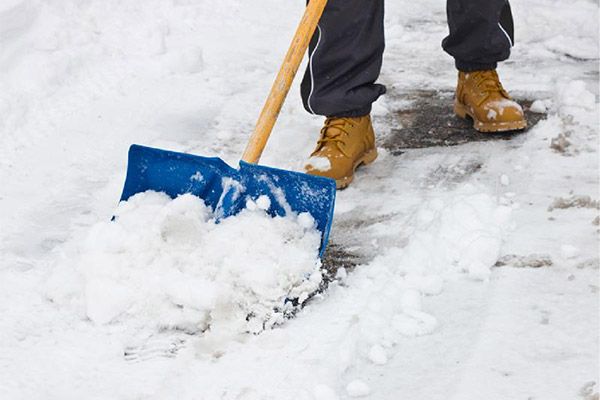
We tend to use a lot of water during the summer months. Whether it be making sure your lawn is looking healthy and green to splashing around in the pool, our water is getting a serious workout when the sun is at its highest. When winter comes calling, though, we aren’t using these systems at all, but we want to make sure that they make it through those cold months so we can enjoy the next summer.
First, let’s focus on the sprinkler system. You’ll want to make sure that the system itself and the timers are shut completely off. Then, check to make sure that the water is completely drained. There are some systems that will do this automatically, but you may have to take the time to do it manually. If you do, make sure to be careful and wear the proper eye protection. You’ll be releasing one valve at a time to drain the water and then closing them back up. If you don’t get all of the water out, the system can be damaged in the event the water freezes.
Then there’s the big boy: the pool. You don’t want to start the winterization process while the pool is still dirty, so the first thing is too deep clean to the best of your ability. This means using a skimmer and vacuum while also completely cleaning the filter and shocking the water. Next, add some algaecide and run the pump for 24 hours.
Now, we’ll want to turn off all of the pool equipment and start draining the pool. Store the equipment in a safe place like a shed, pool house, or garage, then plug the pool. Finally, it’s essential to have a pool cover for the winter. This is something that you won’t want to go cheap for, as a good pool cover can prevent just about everything from getting in and delaying your pool time for the post-winter months.
Equipment List

The best time to buy any winter equipment is before you need it. Not only will you have it on hand when the time comes, but you’ll also be saving a lot of money as prices for particular pieces of equipment are increased during the winter months. The first things that you’ll want to pick up include equipment used for the outdoors. This means a shovel and sidewalk salt that can prevent serious injuries in your driveway. If you have a bit more concrete to work with or get a lot of snow in your particular area, you may want to consider investing in a snowblower.
Each year, there are more than 11,000 snow shoveling-related injuries or health conditions, and around 100 deaths. Investing in a snowblower could end up saving your life if you’re higher in age or have a heart condition. This is especially true if you have a larger driveway that can take up to an hour to clear off with only a shovel.
You’ll also want the proper outdoor gear readily available for winter, including hats, gloves, scarves, coats, boots, etc. As for the indoors, make sure your home has blankets that can handle lower temperatures and a space heater for times when the heating system is struggling to keep up with the next polar vortex. It also doesn’t hurt to have a humidifier in the house because winter almost always means dry air.
Windows and Doors
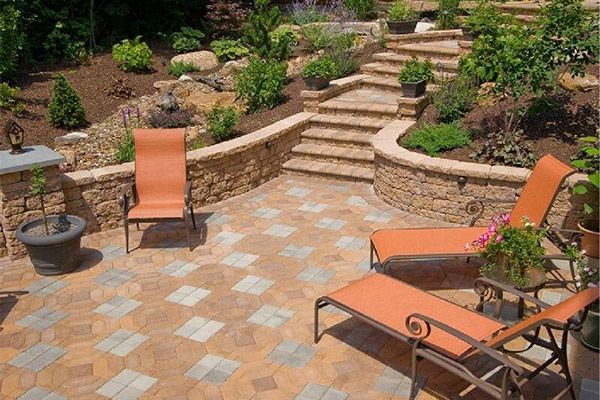
Obviously, a busted heater is going to be your biggest reason for low temperatures in your house during the winter, but don’t forget the type of impact that your windows and doors can have. Just a little bit of a draft can drop your home’s temperature dramatically. This results in a massive increase in energy use as the heater has to catch up with the constant winds seeping through the cracks.
With that in mind, it’s time to make your home draft-proof before the winter kicks off. Thankfully, doing this isn’t a massive undertaking that costs a bunch of money and takes a lot of time. You can use caulk to insulate your windows, letting them dry overnight and getting rid of the excess residue. Some people prefer to use insulation film, which covers the entire window and can be adhered to by simply running a hair dryer over it on high heat. Another form of winter-proofing your windows is using weather stripping. If you really want to go all out, you can combine the three to make your windows into winter-proof fortresses.
The same weather stripping or caulking methods can also be used on your doors. Those are easy to do and don’t cost much, but there are some more complicated methods that include installing new sweeps, foam insulation, and foil stripping. Lastly, there’s the age-old method of using a door snake, those cute little padded tubes that go on the bottom of your door with ease.
Patio Primer
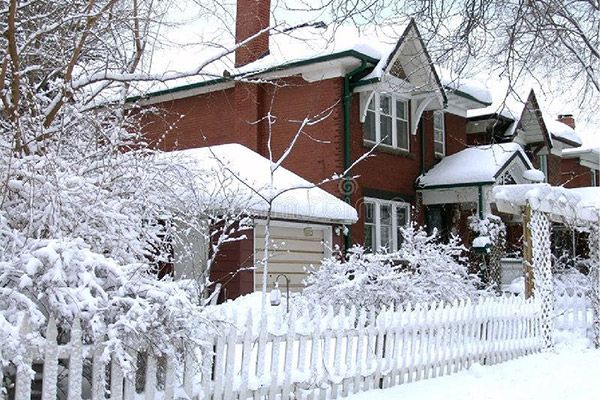
During the summer months, you’re going to be spending a lot of time outside, especially on your patio. When the winter comes calling and you’re inside, though, don’t leave your patio furniture and equipment out in the cold. If you’re not able to bring your furniture to an indoor location (and most people won’t since garages are only so big), then you’ll want to make sure they’re covered. You can pick up some winter covers at most hardware stores and cost around $30 to $60 each depending on the size and shape.
Then there’s the grill that got you through those hot months. Before winter, make sure all of the residues from the countless burgers and hot dogs you made get completely cleaned off. Just like the rest of the furniture, it can either go indoors or can be covered up for the winter. With the patio accessories taken care of, it’s time to focus on the patio itself.
If your patio or deck is made of wood, you’ll want to make sure that it’s sealed or stained. For concrete patios, use the remaining warmer weeks to fill up any holes and cracks. This extends to the sidewalk, as well. This won’t be something that you have to do every year, but it’s good to assess what potential work your patio, deck, or sidewalk might need the following spring.
Wrapping Up
Yes, it’s not fun to think about, but we know that winter comes every year to drop the temperatures to below freezing and then dump snow on all of us. For some, it’s a great time of year while others pine for the return of daylight savings time and warmer weather, thinking about those 10 pm sunsets out on the lake.
It may have made you sad the entire time you were getting your house ready for winter as a result, but trust us, you’re going to be a lot happier when it does get warm again (and we promise it will) when there are no repair bills and the energy bills don’t make you faint. If you followed this checklist, this could end up being your best winter yet.
Comments
Leave a comment